How To Fish O'Neill Forebay
O'Neill Forebay Fishing Report
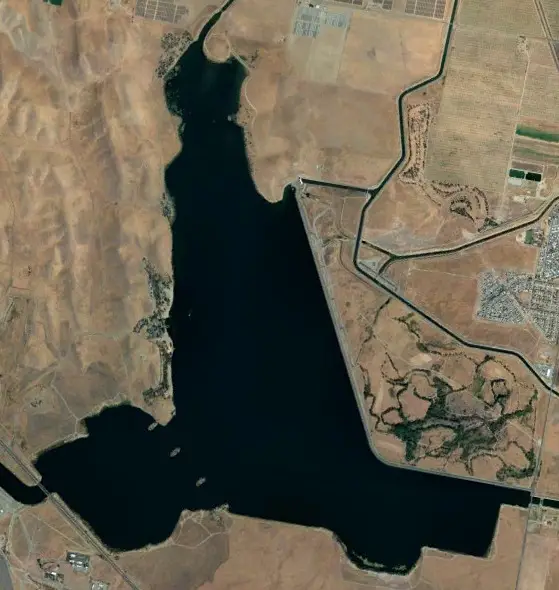
O’Neill Forebay is a auxiliary reservoir that sits just east of San Luis Reservoir 120 miles away from San Francisco, or 276 miles from Los Angeles.
Overall it’s a popular weekend getaway lake known for its fantastic striped bass and largemouth bass fishing. You can also catch catfish and crappie fishing during the summer. Conversely, you can catch trout, salmon and sturgeon fishing during the winter. In this post you’re going to be given the blueprint to fish this lake.
So what are the best tips for fishing O’Neill Forebay? There are three important factors you must know if you want to know how to fish O’Neill Forebay successfully. First, you need to know what kind of fish is in O’Neill Forebay. Second, it’s important for you to know which part of the lake each species can be found. Lastly, knowing what are the best baits that work on O’Neill Forebay is vital. However, tactics, baits, and locations will be different for each type of fish that you target. So let’s talk about the steps you need to take in order to give you the best chance of catching a fish on O’Neill Forebay.
About O'Neill Forebay
O’Neill Forebay Is a relatively shallow body of water with the average depth being 40 feet and a maximum depth of over 56 feet when the lake is completely full. Furthermore, it’s 2 miles long and 2 miles across.
Needless to say, O’Neill Forebay fishing can go gangbusters when you have 2,250 acres to fish… And in this post you’re going to be given the blueprint to fish this lake.
Important Lake Warnings
Algae blooms may be present which may affect fishing, swimming, and water contact in general.
According to parks.ca.gov, “every one of California’s new laws requires boat operators to have a California Boating Card. The card is required for anyone under the age of 41 to operate a boat in California’s waters.”
If you are fishing and camping, fire bans may be in effect due to the ongoing drought conditions.
O'Neill Forebay Fishing Tips & General Strategies
O’Neill Forebay fishing can be pretty tough… but it doesn’t have to be! That’s why I’m giving you my notes for this place. I hope this helps!
Water Clarity:
Water visibility at O’Neill Forebay is clear to moderately stained depending on where you are. Most of the time though you’ll be good to go for some sight fishing structure and weedlines.
Forebay Structures & Cover:
For any bass angler, structure and shelter are crucial components, and in O’Neill Forebay, you can expect to fish:
Rocky Points: The abundance of rocky points in O’Neill Forebay fuels a fishing frenzy in the mornings and when it’s windy. Try to cast your crankbaits and jigs past the point and reel it across it, because these underwater oasis are perfect for ambushing unwary prey.
Aquatic vegetation: Bass have the ideal hiding place thanks to a healthy amount of emergent and submerged vegetation. Throw some weedless frogs and flippin’ rigs in there to attract a bite.
Riprap: The bass will be scrounging around in search of their next meal because there is a lot of riprap (rocky banks) lining the shoreline. Prepare to pull in the hawgs by tying on a spinnerbait or crankbait.
Last but not least, the forebay is home to a variety of man-made structures, such as man made islands, ditches, ledges, and more.
Springtime Fishing update
So you want to fish O’Neill Forebay this spring, do ya? Here’s what you need to know…
Weather
Expect some pretty nice weather during the spring, meaning the air temperature ranges from the mid-50s to the low 70s°F. The mornings can be chilly, but the afternoons are typically nice, so bring layers.
With gusts ranging from 5 to 15 mph, the forebay is renowned for its breezy weather. To prevent casting into the wind, you should position yourself in accordance with the direction of the wind, which is normally from the northwest.
The combination of sun and clouds can result in sporadic downpours. Be ready for sudden changes in the weather and take advantage of those cloudy days when bass are most active.
Striped Bass Spawn
Time of Year: Striped bass normally spawn in the spring, with the prime breeding months being April through June.
Locations: Stripers are inclined to places with moving water, such as inflow channels and the outflow of the dam, where they spawn in O’Neill Forebay.
Stripers can be found in particular places like the Medeiros Inflow Region, the California Aqueduct Inflow, and close to the O’Neill Dam.
Striped bass prefer to spawn in waters that are between 58°F and 65°F in temperature. Watch the temperature to help you decide when to go striper fishing.
Largemouth spawn
Time of Year: The largemouth bass spawn normally lasts from late February to May. Largemouth bass spawn significantly earlier than striped bass.
Locations: Largemouth bass look for safe, shallow locations with good structure and protection for their nests.
In O’Neill Forebay, shallow coves, backwaters, and regions with aquatic vegetation or sunken timber are excellent locations to locate largemouth bass. If you want to catch some excellent largemouth bass, check out places like the South Banks and Canal Cove.
Largemouth bass start to spawn when the water reaches about 60°F, with the peak activity taking place between 62°F and 65°F. You can predict when the largemouth bass spawn is in full swing by keeping an eye on the water temperature.
O’Neill Forebay – Summer Fishing update
I visited O’Neill Forebay last summer, a haven for fisherman seeking striped and largemouth bass. Below is a summary of the seasonal weather, water temperatures, and main food sources for these species.
Summer Weather Patterns
At O’Neill Forebay, the air was between the mid-80s to low-100s°F. I remembered to bring sunblock for those hot days!
Compared to spring, the winds were often milder and ranged from 5 to 10 mph. There were still sporadic gusts, though. Winds were out of the northwest winds so I had to be careful with my casting.
The majority of the days were bright and warm during my trip, with really no threat of thunderstorms… but… the week before they had storms every other day. Since it was pretty dry I had to always remind myself to stay hydrated.
Most of the best fishing here was in the early mornings and late afternoons.
Average Summer Water Temperature
During my summertime excursion, the water at O’Neill Forebay was consistently between 75°F and 80°F.
Primary Forage for Striped Bass and Largemouth Bass
Striped Bass: I noted that stripers were eating threadfin shad and even coughed up a couple of American shad and inland silversides.
Once I saw this I matched the hatch with swimbaits or shad impersonators.
Largemouth Bass: I however whenever I cause a largemouth bass they also coughed up threadfin shad and inland silversides (as to be expected). But interestingly, even one coughed up a crayfish, and another had a bluegill halfway down it’s throat! These guys were eating everything!
Techniques
- Topwater: Take advantage of early mornings and late afternoons when bass are active by throwing topwater lures like poppers and frogs.
- Crankbaits: Bump crankbaits along rocky structures and points to trigger reaction bites.
- Umbrella Rig: Why throw one bait when you can throw 5 or more at the same time!
- Drop Shot: Fish deeper waters with a drop shot rig for those finicky, suspended bass.
Reaction Baits
- Strike King Red Eye Shad: A lipless crankbait ideal for covering water quickly and targeting schooling fish.
- River2Sea Whopper Plopper: A topwater lure that creates irresistible surface disturbance.
- Rapala DT Series: Dives-to crankbaits that can reach various depths to target bass near structure.
Finesse Baits
- Yamamoto Senko: A versatile soft plastic stick bait that can be rigged weightless, wacky, or Texas-style.
- Roboworm Straight Tail Worm: Perfect for drop shot rigs and fish holding in deeper water.
- Zoom Super Fluke: A soft jerkbait that imitates baitfish, triggering bites from bass in grass or around cover.
Top Locations
- Canal Cove: A shallow area with aquatic vegetation, great for largemouth bass.
- South Banks: Offers a mix of rock, timber, and vegetation for bass to ambush prey.
- Medeiros Inflow Area: A hot spot for striped bass due to moving water and baitfish.
- California Aqueduct Inflow: Another prime location for striped bass, as they follow the current.
- O’Neill Dam: Target both striped and largemouth bass near the dam’s outflow and structure.
But Where Are The Best Places To Fish At O'Neill Forebay?
And in no particular order here is that list of the best fishing spots at O’Neill Forebay.
DISCLAIMER: The material provided is for general information purposes only. It’s important to understand that any information provided in this article can change at any time. Any maps or graphics featured are not to be used as navigational aids. Fishing Blueprint will not be responsible for any personal injury or property damage from any misuse of the maps or graphics provided. It’s completely impossible to give you every single spot where you can potentially catch a fish. But, what this list does do is to give you a helping hand and narrow down to the most productive fishing spots.
Cut Channel West “152 Channel”

This area features a deep channel that can provide amazing in the spring through the fall. When the weeds grow thick, it pushes fish deeper into the channel.
When there is current flowing into it from San Luis Reservoir baitfish and bass will hold near the edges, points, and cuts within the weedbed.
Furthermore, there are several areas on the deep channel ledge that are hard spots more so than the surrounding areas. Bass will also congregate around these spots.
Look closely…
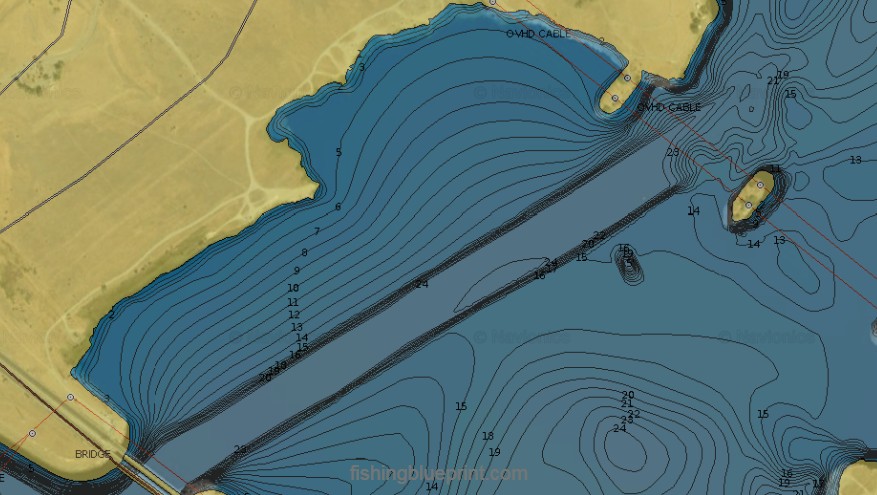
Fishing on O’Neill Forebay can be very windy and can quickly blow you off your spot. That is why it’s strongly recommended you use a quality drift sock, it’s kinda like a parachute for the water to keep your drift at the perfect speed.
Effective baits for this area include: topwater lures, buzzbaits, frog lures, crankbaits, soft plastic swimbaits, spinnerbaits, jerkbaits, chatterbaits, swim jigs, hair jigs, and underspin jigs when the bass are aggressive. Flutter spoons work great in the deeper channel sections and above any vertical timber as well.
If the bass are timid, then drop shot, tubes, Ned rig, Neko rig, Mojo rig, Carolina rig, and football jigs all work really well.
152 Flats
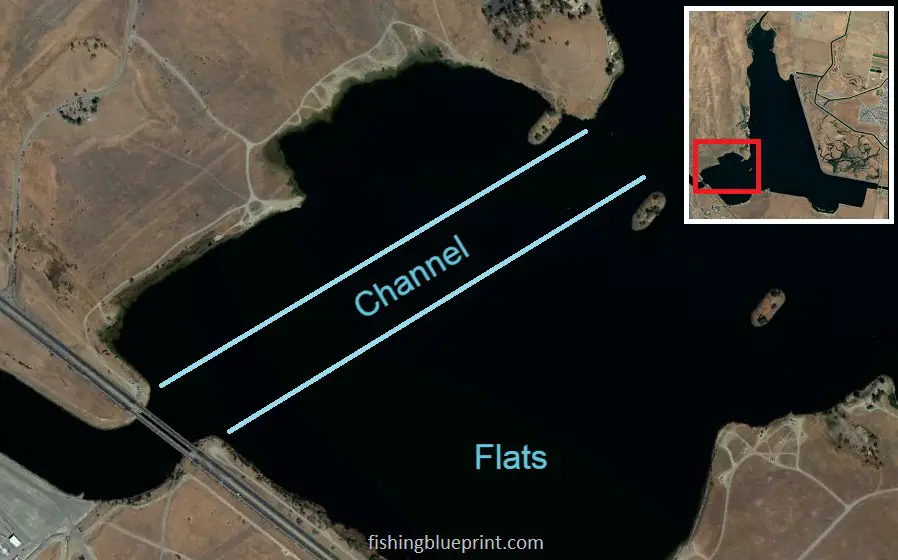
Look closely…
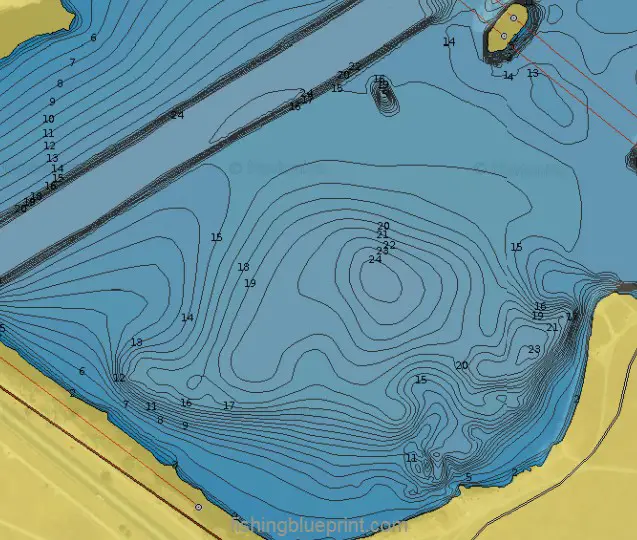
That spot was great because it was a “grass flat” with essential structure. It was a fairly large area with very little change in depth, covered in vegetation. Sometimes, this vegetation grew to the surface, creating a floating mat or canopy.
When the weeds were just developing or dying off, this huge flat fished well, creating deep channels in the vegetation. Bass hid in weed-filled holes and ambushed bait.
It was relatively shallow (between 15 to 20 feet deep), and what made this spot unique was all the cover the fish could hide in and call home. Parts of the flat were close to deep water (such as the 152 Channel), and there was a depression in the middle of the flat that dropped into 25 feet of water. If the fish felt threatened, they could retreat there. Fishing the outside edges frequently resulted in fish being caught.
Additionally, there were several hard bottom patches, small rock piles, and high spots on humps that I checked for fish.
Lastly, there were some spots within this area that created large ‘holes’ in the weedbed. These open areas frequently held bass.
I fished the holes with a grass flipping jig, wacky rig Senko, Mojo rig, Texas rig, weedless tubes, or even a drop shot.
If the grass was submerged, I fished over the tops with a topwater lure, buzzbaits, frog lure, chatterbaits, or Whopper Plopper.
I fished the weedline edges parallel with crankbaits, lipless crankbaits, spinnerbaits, frog lures, soft plastic swimbaits, umbrella rigs, swim jigs, underspin jigs, or chatterbaits.
There were several hard bottom patches, small rock piles, and high spots on humps that I checked for fish.
Lastly, there were several small drainage ditches that I checked for fish as well.
The Islands

These islands attract fish all year long.
For starters, there is another area featuring a deep channel just to the west of South Island that can provide amazing fishing in the spring through the fall.
Interestingly, when the weeds grow thick, it pushes fish deeper in the channel. When there is current flowing it also baitfish and bass will hold near the edges, points, and cuts within the weedbed.
For the last feature, there are several areas on the deep channel ledge that are hard spots more so than the surrounding areas. Bass will also congregate around these spots.
Medeiros Flats
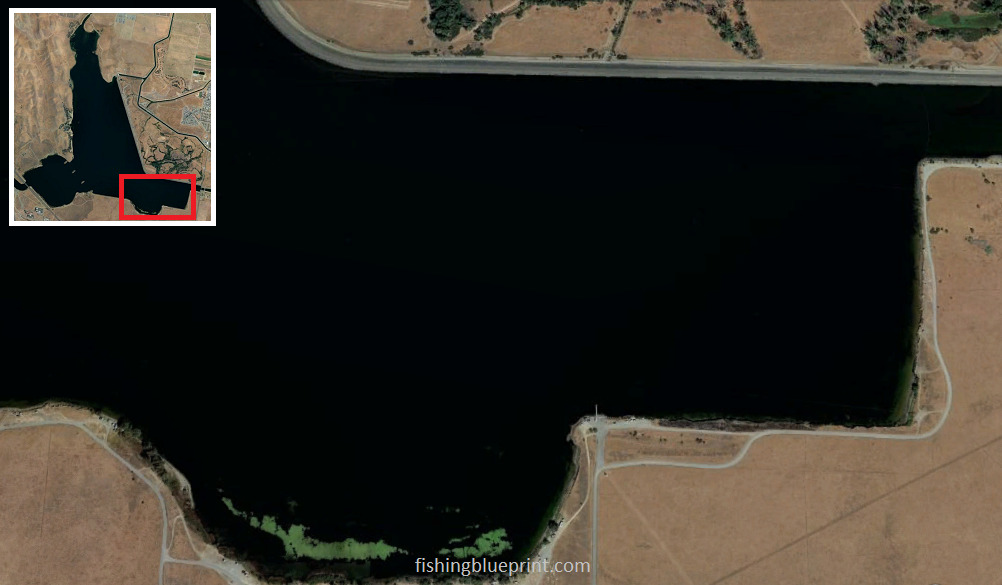
This spot is great because it’s a “grass flat” with important structure. It’s a fairly large area that has very little change in depth and is covered in vegetation. Sometimes this vegetation can grow to the surface creating a floating mat or canopy.
When the weeds are just developing or dying off, this huge flat fishes well, creating deep channels in the vegetation. Bass will hide in weed-filled holes and ambush bait.
The Medeiros Wall
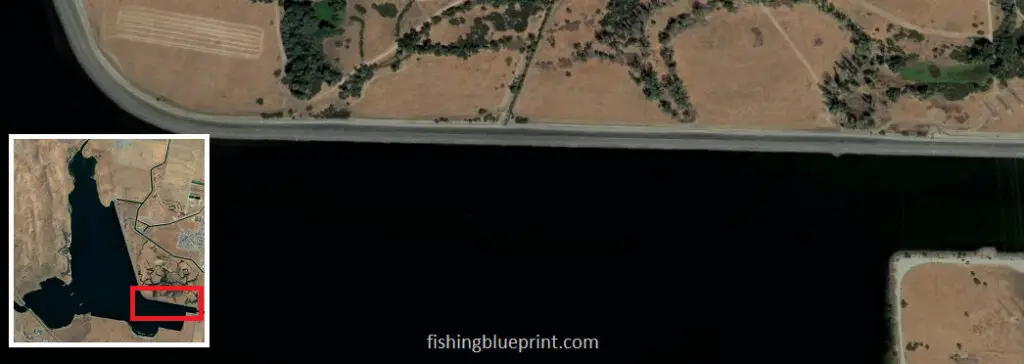
The Wall had current when the Dam was pumping out.
This section featured a long rocky bank. The bank was characteristically very steep and made from large chunk rock to boulder-size substrate.
When there was current flowing into it from San Luis Reservoir, baitfish and bass held near the edges, points, and cuts against the rock wall and against the weedbed across the channel.
Naturally, crawfish, bluegill, minnows, and shad sought shelter in this area.
Given this embankment’s large area, it was best to focus my efforts on natural cuts and points.
Pump Out Flat
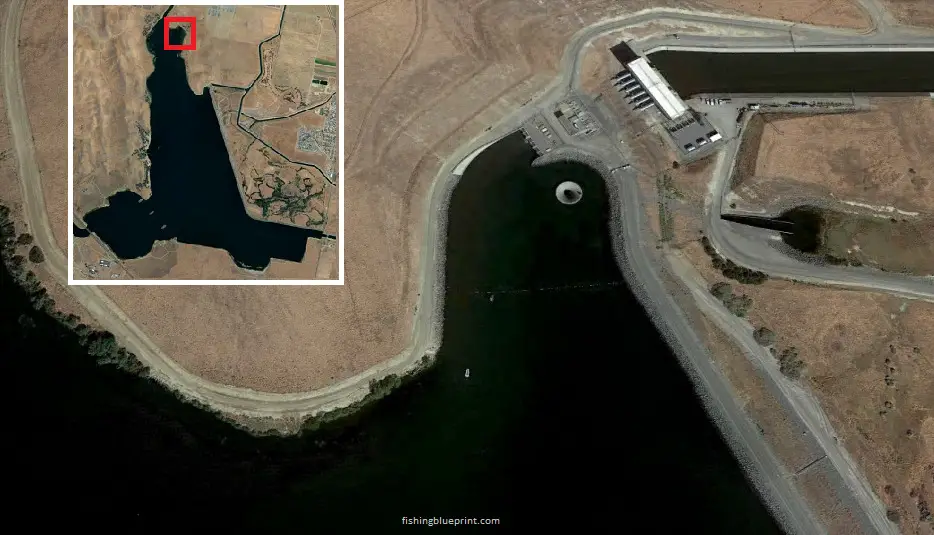
Look closely…
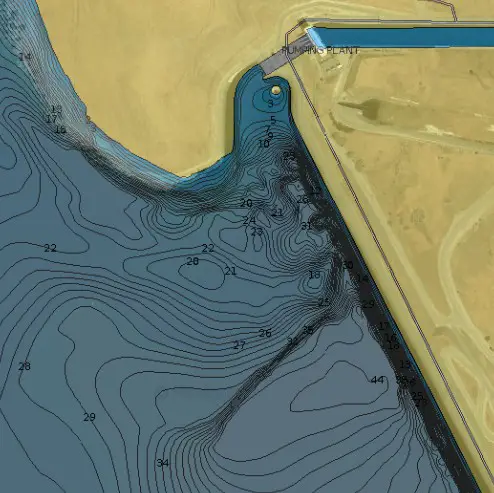
This spot is great because it’s a “structure flat”.
The water is pumped out of O’Neill Forebay and flows over a series humps and down over a submerged ledge.
The depth drops from 25-feet to around 40-feet over a span of 10 yards.
Striped bass and largemouth bass will set up either on top or just off the edge of the drop off. They also use this area to dive into if the fish feel threatened.
Fishing the edge of the long drop off can frequently result in fish being caught year round.
Lastly, there are several drainage ditches on the flat that should be checked for fish as well.
The Jungle
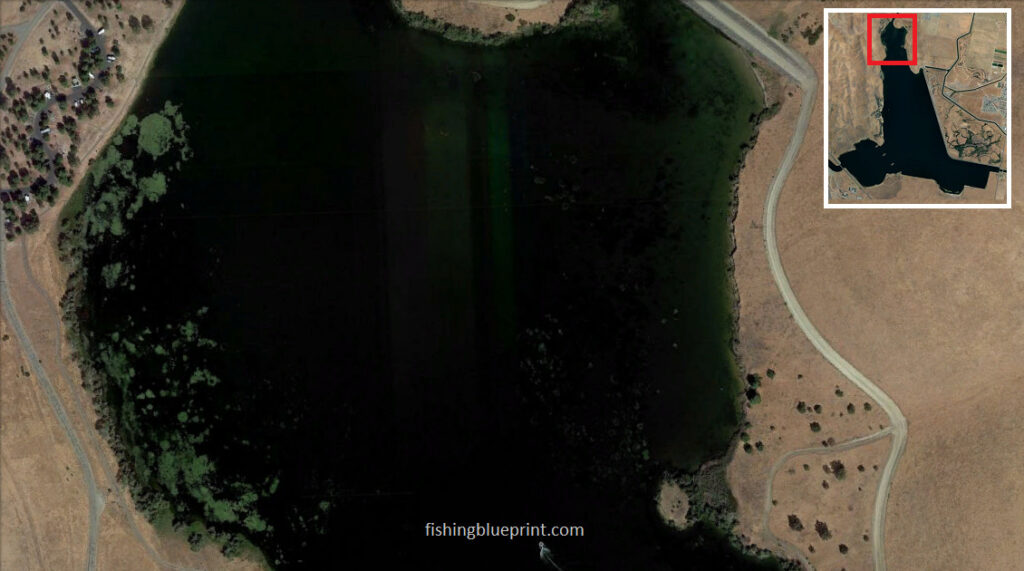
This expansive area was big, and there were multiple ways to fish it.
Sometimes, the vegetation grew to the surface, creating a floating mat or canopy.
When the weeds were just developing or dying off, this huge flat fished well, creating deep channels in the vegetation. Bass hid in weed-filled holes and ambushed bait.
It was relatively shallow (between 4 and 20 feet deep), and what made this spot unique was all the cover the fish could hide in and call home. Parts of the flat were close to deep water, so if the fish felt threatened, they could retreat there. Fishing the outside edges frequently resulted in fish being caught.
Boat Ramps at O'Neill Forebay
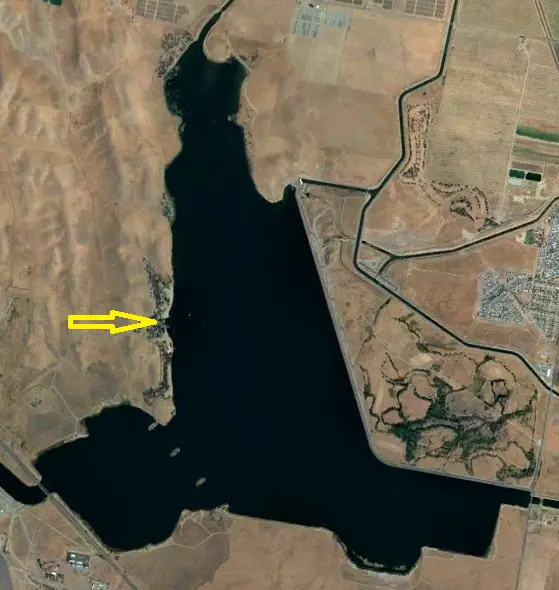
San Luis Creek North Beach Boat Launch
Gustine, CA 95322
(209) 826-1197
Lanes: 2
Restrooms: Yes
Tackle Shops Near O'Neill Forebay
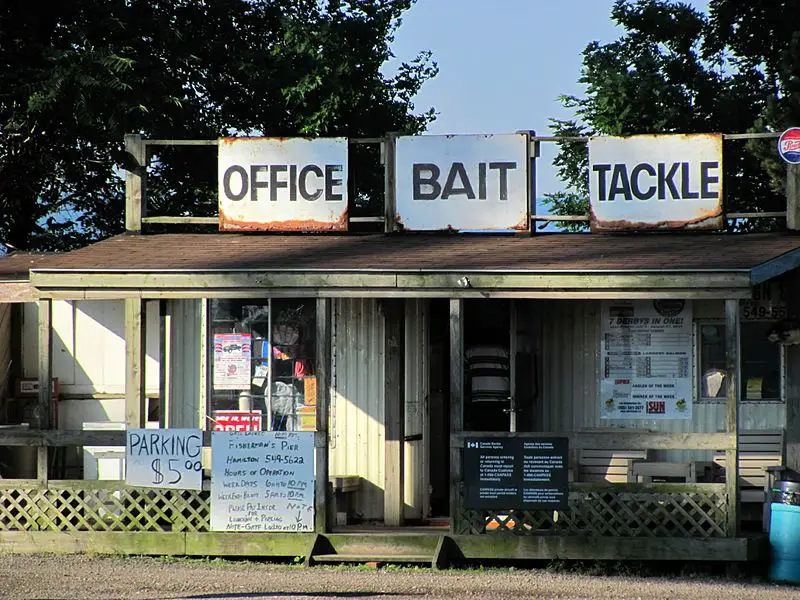
Main Street Market Live Bait and Tackle
13301 CA-33, Gustine, CA 95322
Located in: Santa Nella RV Park
Walmart Supercenter
1575 W Pacheco Blvd, Los Banos, CA 93635
(209) 826-9655
Places to Tent Camp Or RV Camping At O'Neill Forebay
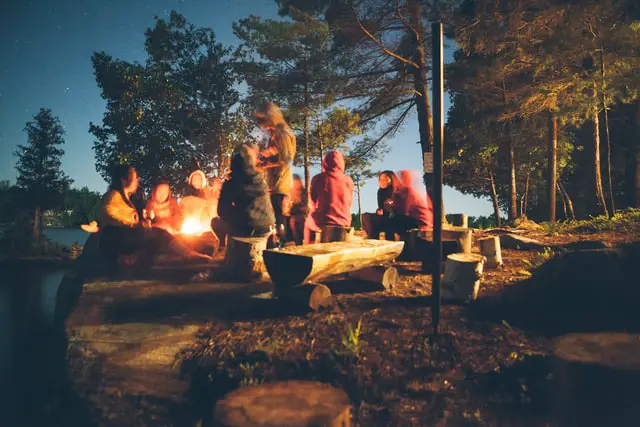
San Luis Creek RV Campsite
Gustine, CA 95322
(209) 826-1197
San Luis Creek Group Campsite
31426 Gonzaga Rd, Gustine, CA 95322
(209) 826-1197
Other California Related Fishing Articles
- Bass Lake Fishing Report
- Clear Lake Fishing Report
- Castaic Lake Fishing Report
- California Delta Fishing Report
- Diamond Valley Lake Fishing Report
- Don Pedro Reservoir Fishing Report
- Eagle Lake Fishing Report
- El Capitan Reservoir Fishing Report
- Lake Berryessa Fishing Report
- Big Bear Lake Fishing Report
- Folsom Lake Fishing Report
- Irvine Lake Fishing Report
- Lake Almanor Fishing Report
- Lake Camanche Fishing Report
- Lake Isabella Fishing Report
- Lake Havasu Fishing Report
- Lake McClure Fishing Report
- Lake Oroville Fishing Report
- Lake Perris Fishing Report
- Lake Piru Fishing Report
- Lake Skinner Fishing Report
- Lake Tahoe Fishing Report
- Los Banos Reservoir Fishing Report
- New Hogan Lake Fishing Report
- New Melones Lake Fishing Report
- O’Neill Forebay Fishing Report
- Pardee Lake Fishing Report
- Pyramid Lake Fishing Report
- San Luis Reservoir Fishing Report
- San Vicente Reservoir Fishing Report
- Shasta Lake Fishing Report
- Silverwood Lake Fishing Report
- Trinity Lake Fishing Report
- Whiskeytown Lake Fishing Report
More articles just for you...
Funny Fishing Rules, Laws, and Regulations 2025
Crazy Fishing Laws That Will Blow Your Mind! #7 is INSANE! Strange Fishing Regulations and Laws As silly as hook and rod limits may seem,
EXPOSED! How To Use A Spinnerbait The Right Way for 2025
Are You Wondering How To Use A Spinnerbait? Or How To Work A Spinnerbait Over Grass, Logs, or Points? Well, All These Questions Are Answered
EXPOSED! Best Crankbait Colors for 2025 [Which to Buy & Avoid]
What color crankbait to use? Crankbait Color Chart I just love going into a Bass Pro Shops store and just staring at all the walls
Best Underwater Dock Lights For Fishing – 2025 Buyers Guide
Night Dock Light Fishing For Beginners Dear fellow angler, Does this sound like you? You’re someone who loves fishing but just wants to escape the
15 Best Deep Diving Crankbaits [2025 Buyers Guide – Which to Buy & Avoid]
A Complete Buyer’s Blueprint On The Best Deep Diving Crankbaits for Bass, Walleye, or Striped Bass On The Market Today Fishing deep diving crankbaits can

